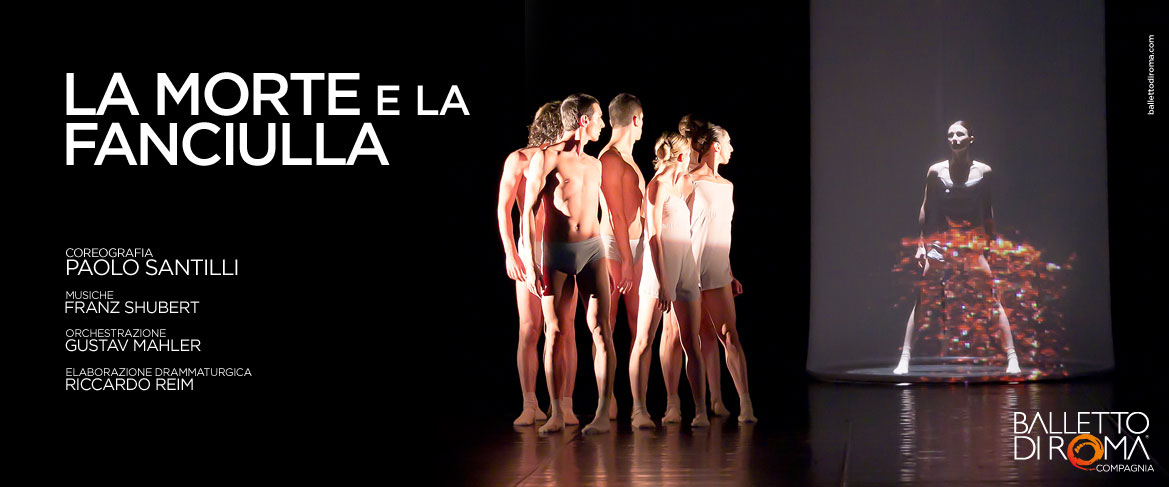Director’s Notes
The Balletto di Roma dance company, in its constant research and eagerness to experiment within the contemporary dance landscape, has entrusted its new production of Death and the Maiden – the famous string quartet in D minor composed by Franz Schubert and later arranged for string orchestra by Gustav Mahler – to the young choreographer Paolo Santilli, whose dramatic interpretation is similar in style to that of Riccardo Reim. The renowned piece by Schubert/Mahler is famously inspired by a poem of the same name by Matthias Claudius, which draws its inspiration from an artistic (iconographical more than literary) theme that is rooted in the Renaissance and recurring in the Germanic tradition: a young maiden in her prime meets Death, who invites her to follow him by dispelling her fears with gentle words: “Give me your hand, beautiful creature, I am a friend, not come to punish. I am not wild – you shall sleep gently in my arms…” The pairing of Love and Death – typical of the Romance period – here assumes an eerie, macabre sensuality: death can thus appear as a fascinating lover that welcomes us and invites us to surrender to with confident serenity. This is a theme that can be linked to the current pressing and controversial euthanasia debate, may that be voluntary or otherwise: death interpreted as a mutation and not as a negation of life, a crossing of the same mysterious “light tunnel” that many have astonishingly witnessed and recounted, an answer to the most frightening of all human questions… The four enthralling musical movements composed by Schubert (corresponding in turn to the four movements of Claudius’ poem: Meeting/Rebellion/Yield/Rebirth in death itself) are here portrayed within the choreography by the four elements of nature – Earth, Fire, Water and Air – in a particularly emotional (and not merely “narrative”) visual performance of the poetic theme: this is a modern and effectively compelling interpretation that, drawing from the fervour of Sturm und Drang, addresses the audience with a disturbing but at the same time beneficial provocation.
Credits
choreography
Paolo Santilli
music
Franz Schubert
orchestral adaptation
Gustav Mahler
dramatic adaptation
Riccardo Reim
costumes Giuseppina Maurizi
lighting designer
Emanuele De Maria
video installation
studio Vertov
Luca Scarzella, Michele Innocente,
Anna Frigo, Roberto Barbierato

